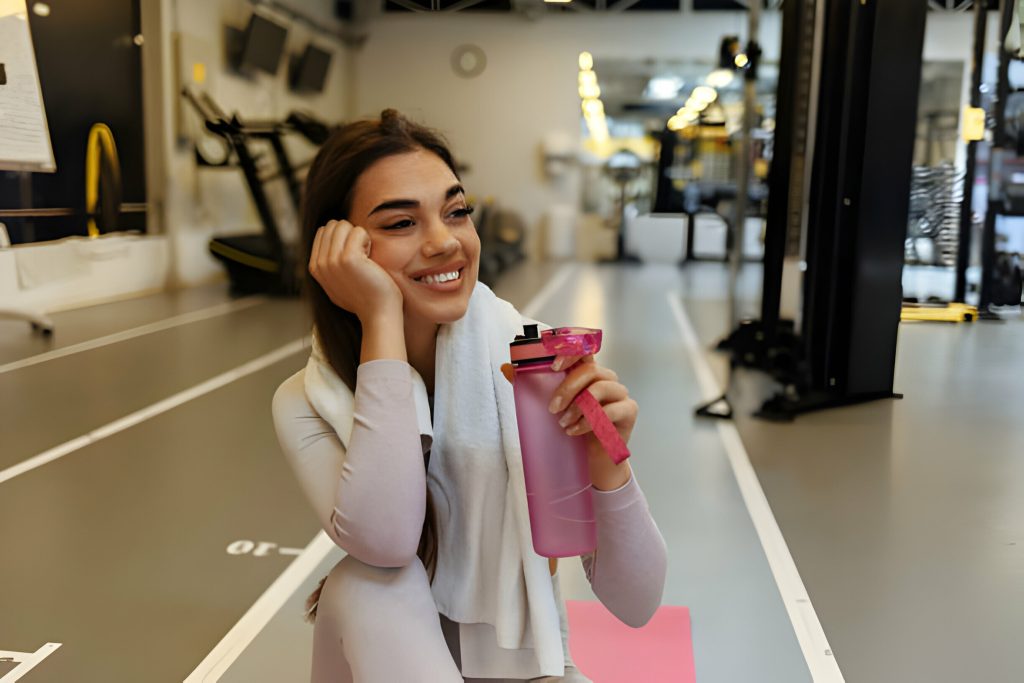The first rule for achieving your goals is honesty. Yes, being honest with yourself about where you are starting from and what you truly want to achieve is crucial. In this article, we will provide you with essential information and practical tips to help you succeed on your fitness journey. So, let’s dive in and discover what you need to know to get in shape!
Understanding Your Personal Fitness Journey
Understanding your personal fitness journey is crucial in order to set realistic goals and find enjoyable workouts that will keep you motivated and committed. It’s important to consider your personal preferences when it comes to exercise. Do you prefer working out in the morning or evening? What types of activities do you enjoy? By understanding your own fitness journey, you can tailor your workouts to suit your needs and interests.
Motivation plays a big role in staying consistent with your fitness routine. Take some time to understand what motivates you. Is it the desire to improve your health, lose weight, or gain strength? Knowing what drives you will help you stay focused on your goals.
When starting out, it’s important to start slow and gradually increase the intensity of your workouts. This will prevent injuries and allow your body time to adjust. Overcoming obstacles is also a key part of any fitness journey. Whether it’s lack of time, energy, or self-confidence, finding ways to overcome these challenges will help you stay on track.
Setting Realistic Goals for Success
To set yourself up for success, start by establishing realistic goals that align with your fitness journey. Goal setting strategies are essential in order to stay motivated and focused on your progress. One effective strategy is to break down your long-term goals into smaller, attainable milestones. This allows you to track your progress and celebrate each achievement along the way. Tracking progress can be done through various methods such as keeping a workout journal or using fitness apps that monitor your activity levels and measure improvements. Accountability methods, such as finding a workout buddy or joining a fitness community, can also help keep you on track and hold you accountable to your goals. Balancing effort and rest is crucial for avoiding burnout and injury. Remember to listen to your body and give yourself adequate time to recover between workouts. Finally, overcoming self-doubt is an important step in achieving success. Believe in yourself and focus on the progress you have made rather than comparing yourself to others. Trust the process and stay committed to reaching your goals.
Making Workouts a Priority
Making workouts a priority means committing to regular physical activity and scheduling it into your daily routine. It’s essential to prioritize self-care and make fitness a non-negotiable part of your life. Here are three steps to help you accomplish this:
- Prioritizing self-care: Recognize the importance of taking care of yourself physically and mentally. Understand that exercise is not just about physical health but also about improving your overall well-being.
- Creating a workout schedule: Set aside specific times in your day dedicated solely to exercise. By creating a structured schedule, you’ll be more likely to stick with it and make it a habit.
- Finding time for exercise: Identify pockets of time throughout the day where you can squeeze in physical activity. This could include waking up earlier, utilizing lunch breaks, or even incorporating movement during TV commercial breaks.
Finding Enjoyment in Exercise
Finding enjoyment in exercise is crucial for maintaining long-term motivation and consistency. It’s important to explore different activities and find joy in movement. Trying new workouts can be a great way to discover favorite exercises and challenge yourself physically. Whether it’s trying a new fitness class, going for a hike, or participating in a team sport, finding activities that you genuinely enjoy will make your fitness journey more enjoyable. Embrace the physical challenges that come with these activities, as they can help you grow stronger both mentally and physically. Remember, exercise doesn’t have to feel like a chore; it can be something you look forward to and take pleasure in. So go out there, try new things, and find what brings you happiness while moving your body.
Staying Motivated on Your Fitness Journey
Staying motivated on your fitness journey can be challenging, but it’s important to find strategies that work for you. Here are some tips to help you stay motivated and overcome obstacles along the way:
- Finding inner motivation: Dig deep and identify what truly motivates you to get in shape. Whether it’s improving your health, boosting confidence, or setting a positive example for loved ones, tap into that inner drive.
- Overcoming fitness plateaus: Plateaus are normal, but don’t let them discourage you. Mix up your routine with new exercises or increase the intensity of your workouts to challenge yourself and keep making progress.
- Building a support system: Surround yourself with like-minded individuals who can offer encouragement and accountability. Join a fitness class, find a workout buddy, or seek support from friends and family.
Remember to harness the power of positive affirmations and utilize technology for tracking your progress. With determination and the right strategies in place, you can stay motivated on your fitness journey.
Nurturing Healthy Eating Habits
When it comes to nurturing healthy eating habits, it’s important to avoid fad diets and focus on making gradual improvements. Instead of restricting yourself with extreme measures, choose sustainable changes that you can maintain in the long run. One way to do this is by making healthy food choices and limiting unhealthy vices. To help you stay on track, here are some practical tips:
| Avoiding Fad Diets | Gradual Improvements | Healthy Food Choices |
|---|---|---|
| – Don’t fall for quick-fix cleanses or restrictive diets | – Make small changes to your eating habits over time | – Opt for whole, unprocessed foods |
| – Focus on long-term health goals instead of short-term results | – Incorporate more fruits and vegetables into your meals | – Choose lean proteins and healthy fats |
| – Seek guidance from a nutritionist or registered dietitian | – Reduce portion sizes gradually | – Limit your intake of sugary drinks and snacks |
Consistency Is Key
Consistency in your fitness routine is essential for achieving long-term results. To help you stay on track and make the most of your workouts, here are some key strategies:
- Building consistency: Make exercise a regular part of your daily or weekly schedule. Set specific workout days and times to ensure that you prioritize physical activity.
- Finding workout buddies: Having a workout buddy can provide motivation, accountability, and make exercising more enjoyable. Find someone who shares similar fitness goals and interests to join you in your workouts.
- Tracking progress: Keep track of your workouts, including the exercises performed, sets, reps, and weights used. This allows you to monitor your progress over time and make adjustments as needed.
Starting Slow and Progressing Wisely
Starting off slowly and gradually increasing intensity is crucial for preventing injuries and ensuring long-term progress in your fitness journey. It’s important to embrace gradual progression as you embark on your exercise routine. This means starting at a level that feels comfortable and manageable for you, and then making small increases over time. You can modify exercises to suit your current fitness level, whether it’s reducing the weight or adjusting the range of motion. Tracking your progress is key to staying motivated and identifying areas where you can push yourself further. By monitoring your workouts, you can prevent plateaus by continuously challenging yourself. Remember to listen to your body throughout this process – if something doesn’t feel right or causes pain, make modifications or seek professional guidance. Your body knows best, so trust its signals and adjust accordingly for a successful fitness journey.
Overcoming Obstacles and Excuses
The key to overcoming obstacles and excuses is to find enjoyable activities that make exercise less intimidating and more manageable. Here are three ways to make exercise more enjoyable and overcome common barriers:
- Overcoming mental barriers: Recognize that lack of self-confidence or motivation can be major obstacles. Practice self-compassion and be kind to yourself. Remember that a little exercise is better than nothing.
- Solutions for common excuses: Bust the biggest exercise excuses by finding solutions. If you hate exercising, find an activity you enjoy or pair physical activity with something enjoyable. If you’re too busy, prioritize exercise and find short bursts of activity throughout the day. If you’re too tired, remember that regular exercise actually boosts energy levels in the long run.
- Finding enjoyable activities: Explore different types of exercises until you find what you genuinely enjoy. Don’t force yourself to love something; discover activities that make your body feel good and stronger. Consider trying out new sports or joining recreational teams for added enjoyment.
Incorporating Exercise Into Your Daily Life
To incorporate exercise into your daily life, prioritize physical activity as a non-negotiable part of your routine. By doing so, you can experience the many benefits of active commuting, such as walking or biking to work instead of driving. Additionally, try incorporating exercise during work breaks by taking short walks or doing quick stretching exercises to rejuvenate both your body and mind. Remember that exercise is not just about getting in shape; it is also a form of self-care. Finding opportunities for physical activity in your daily routines, like doing household chores or gardening, can help you stay active throughout the day. Lastly, embrace the role of technology in integrating exercise into daily life by using fitness apps or wearable devices to track your progress and stay motivated.



